
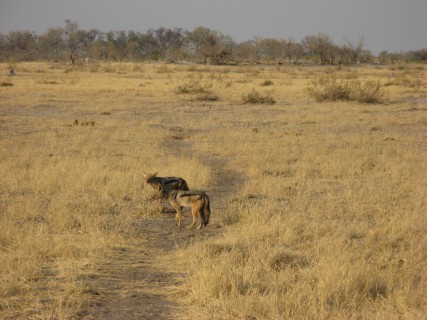

We woke up at 5am again. Beverly was not feeling well again, so she did not join us. The animals were apparently hung over from a long weekend – nothing much seemed to be out (at least comparatively). We saw some more elephants, including several mom and baby pairs, one of which was nursing. We saw several jackals, which actually were jackals this time around. We saw one of the same hyenas we had seen a couple of days earlier, the one who had fed on the dead elephant – they still looked fat.
 |
 |
 |
BB told us that contrary to what is commonly shown on television, a lot of hyenas are solo, and will group together only to scare off another predator from a carcass. We saw a secretary bird, which has very long legs and hunts on snakes. It has no feathers on its front, and its legs are very hard, so snakes that bite the front of it are very unlikely to get any venom into the bird. We saw dog prints, but there were no dogs. Then we saw leopard prints, but there was no leopard. We ended up far away from the camp, at the Zibalianja lagoon, near the NG15 and NG16 concession border. It was very serene there, with some birds, some hippos, and lots of calm water.
 |
 |
On the way back, we had a bit more luck and we encountered a large group of baboons heading down to a watering hole. One of them was getting carried by its mom. We also saw a wildebeest and a massive kudu. We also saw several kingfishers, which hovered about 15 feet above the water, waiting to dive in for small fish. We also saw a saddle-billed stork, which has a long red and yellow beak. We saw a solo giraffe feeding and a monitor lizard. Finally, we saw a group of warthogs, one of which was trying to mate with the females, who kept running around in circles and tiring him out.
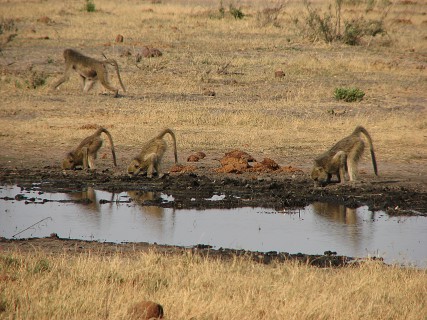 |
 |
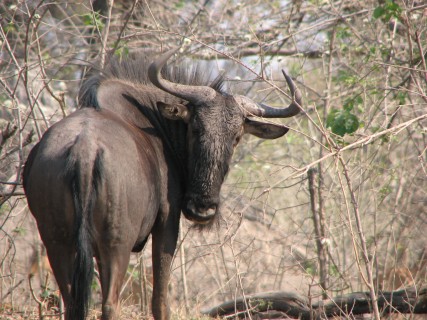 |
 |
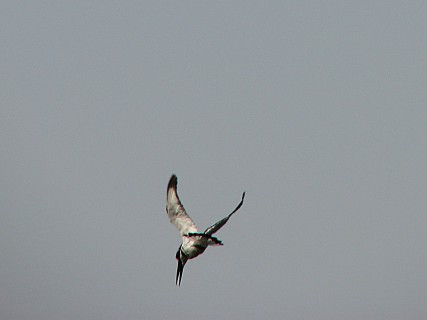 |
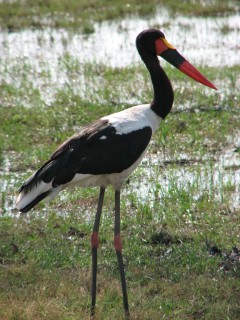 |
 |
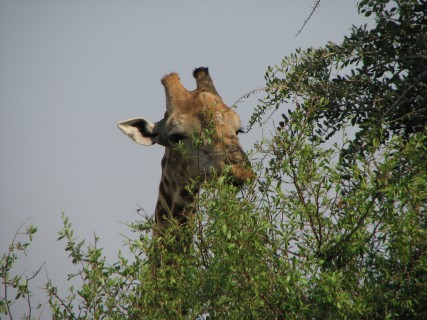 |
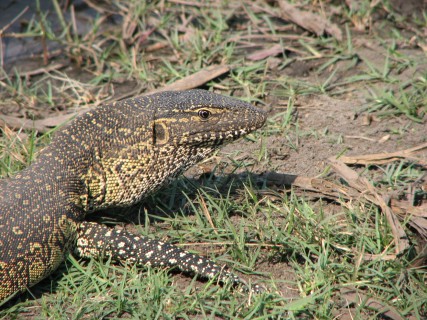 |
 |
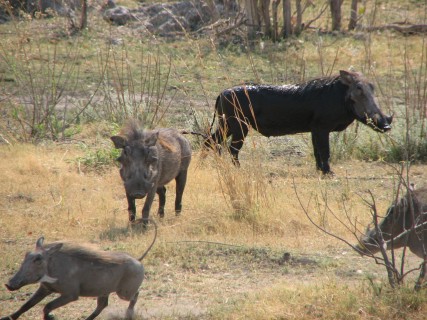 |
When we got back to the camp, we packed our things – fortunately it did not have to be nice and neat, since there was no security for our puddle-jumper. We ate brunch, then headed out shortly thereafter. Right after leaving camp, our truck got a flat. Since we had a plane to catch, BB put the pedal to the metal. The trip was usually 35 minutes, but BB said when he had no passengers and was running late to pick someone up, he could make it in 10-12 minutes. He had at one point competed in off-road driving, replete with mud, sand, water, etc., which explained why none of the terrain during our 3 days had given him any problems. If nothing else, his driving prepared our stomachs for whatever might happen on the plane.
Our plane this time was about twice as big, and seemed much smoother. We made a 5 minute flight to King's Pool to drop someone else off, then headed down to Chitabe, which took about another 25. On the flights we saw a group of elephants, some of which were wandering down the shoreline, others were just standing around. Flying over the desolate mopane "forest" was a bit surreal – much look different in the wet season. As we started to approach Chitabe we saw more water and more palm trees.
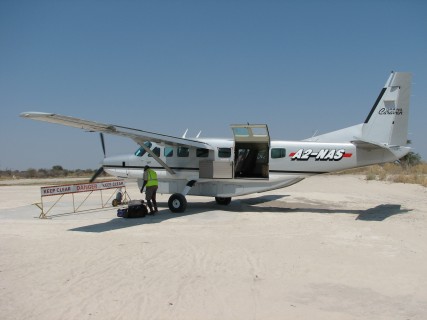 |
 |
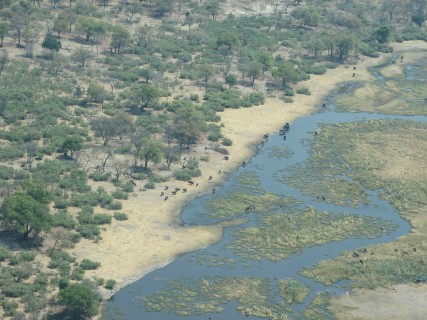 |
 |
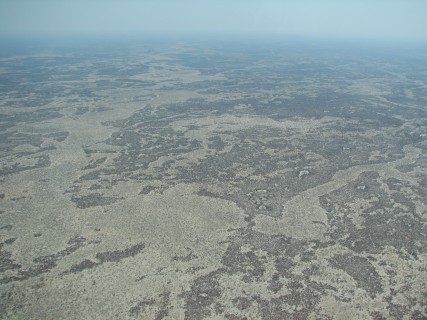 |
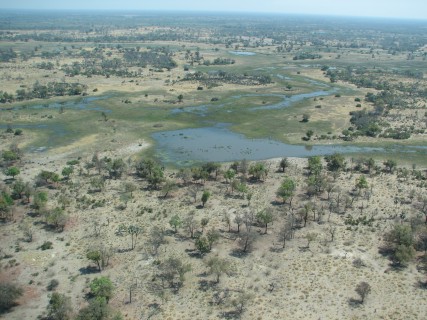 |
 |
Our vehicle at Chitabe had a roof on it, and was set up a bit different – 3, 3, 3 as opposed to 2, 2, 3 – those two seemed to cancel each other out, as the roof was nice but we had less room to put our gear and our feet. The drive from the airstrip into Chitabe took about 25 minutes. On the drive to Chitabe we saw a massive kudu, but not too much else – at least nothing new. When we arrived, we were greeted by several people and Ryan, who seemed to be the manager.
He went over everything with us, and perhaps because this was our second camp, and perhaps because Wilderness Safaris is a much more corporate organization, it seemed more dry and less welcoming. He did show us on the map where everything in the concession was, though, which we appreciated. He also whet our appetite by explaining that we had to keep our doors shut at night because there was a leopard that was always around, including the fact that it had been in camp the night before. Unlike Selinda, the whole camp was on raised walkways, and we were specifically instructed not to walk on the ground. The tent was very nice, but not quite as nice as Selinda, with the bathroom not being separated out like Selinda, and the shower and décor were not nearly as good. The view from the room was nice, but did not appear to have any animals. There was a nice sausage tree right outside the tent. Crystal took a nap, Justin caught up on the diary.
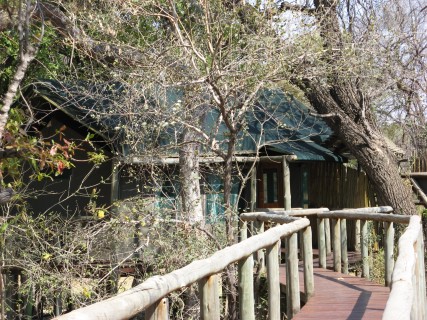 |
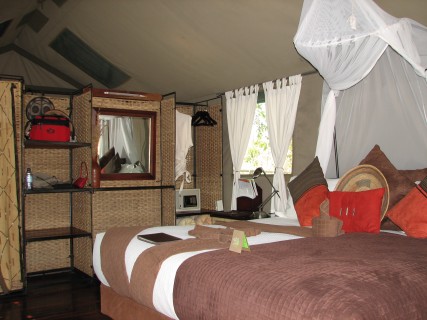 |
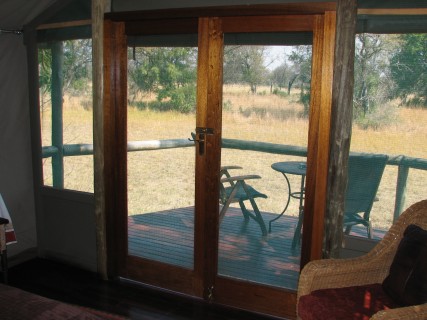 |
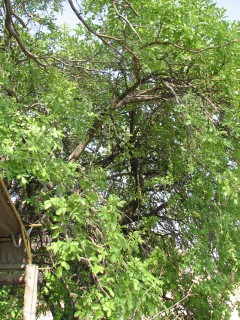 |
We left shortly after 4pm with our guide, Newman – we had requested he be our guide after hearing numerous good things. We found out he has been here since day one, and in fact helped design the camp. He has a completely different style than BB – he stopped far more frequently to look around and listen, and also explain things. First we stopped to look at a giraffe chewing on a sausage tree fruit. It could not swallow the sausage because it was too big, so it was trying to crush it to get the nutrients out. After that he showed us were scratch marks on a tree trunk, which he explained were from a female leopard marking her territory to others.
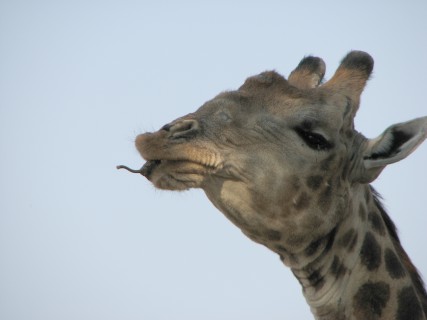 |
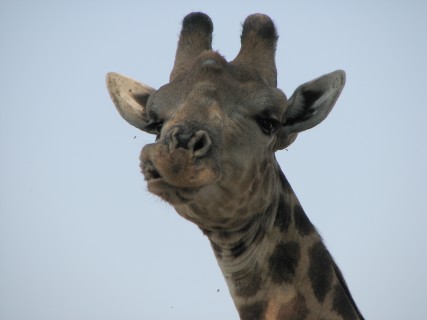 |
 |
He gave a very long and detailed answer to Justin's question as to why there only seem to be juvenile and very old palm trees, and nothing in between – in a nutshell, it is because they need elephants to germinate them (through dung), and for a long while there were no elephants in this area due to hunting and poaching. We saw a tree that was growing out of a termite mound, but did not see much else until we came upon dogs again.
They recently took up a den on the concession. This pack had 5 pups. We got to see a "greeting ceremony" when one dog who has been away for a bit comes back to the group – lots of noise and running around, not that different from what happens to us when we get come home every evening. We stayed around the dogs for quite some time. Some of the highlights included:
 |
 |
 |
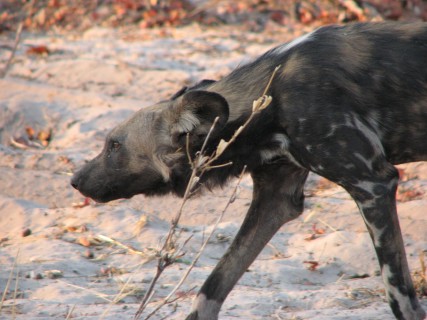 |
 |
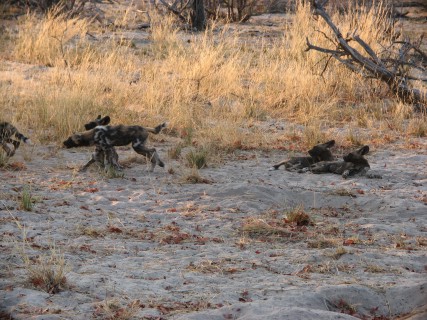 |
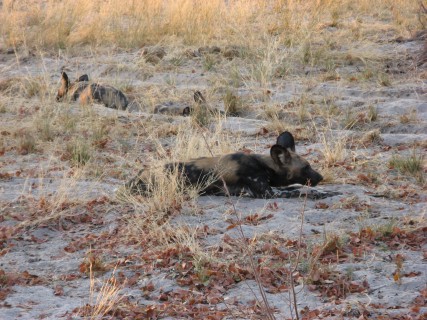 |
From where the dogs were denning, we went to a nearby open area and had sundowners. The front of the truck bent over to make a bar. It was a very nice sunset again, nicely backlighting all of the scrub. On the way back, we again went very slowly, while Newman drove and Fanie aimed the spotlight around. We saw a bushbaby, the world's smallest primate, who we found out pees on its legs and spreads its scent as it jumps from tree to tree. We noticed there were hot pockets in areas where there were trees, and cold pockets in areas where it was open plains – the difference must have been at least 5 degrees Fahrenheit. We also saw both spring hares and shrub hares. Shrub hares resemble the rabbits we have back home. Spring hares resemble small kangaroos, hopping around on two legs like them. We had dinner in the huta (sp?), in traditional fashion, with the women serving the men. We went to sleep early, as we were exhausted.
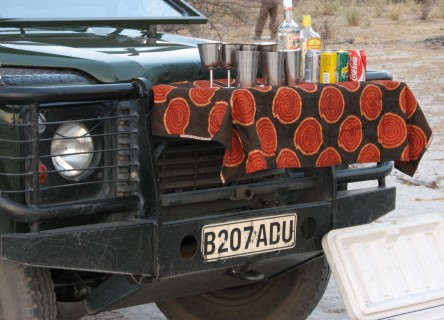 |
 |
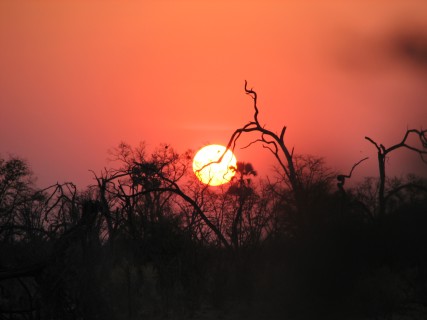 |